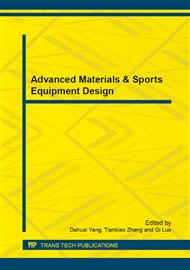p.92
p.97
p.104
p.112
p.121
p.127
p.131
p.135
p.140
A Research of the Microfluidic Cell Chip Technology to Reduce Urine Cells Overlap Rate
Abstract:
Objective: Employ a new a method using Microfluidic Cell Chip improve the recognition rate of cells in urine. This method will decrease errors caused by failure to distinguish cell in urine based on the overlapping cell morphology characteristics and cell parameters. Methods: (1) enroll 60 patients respectively of acute glomerulonephritis, acute pyelonephritis and acute cystitis, employ WB-2000 automated urine analyzer to detect 9 kinds of biochemical indexes urine protein, glucose, ketone, uric bilirubin and urobilinogen, nitrite, pH, erythrocytes and leukocytes. (2) Observe the overlap count of erythrocytes and leukocytes in the urine of three groups of patients, and calculate overlap rate of erythrocytes and leukocytes of each group of the patient's respectively. (3) After separating urine cells with Microfluidic Cell Chip technology, test the overlap rate of erythrocytes and leukocytes. Results: (1) The overlap rate of erythrocytes in acute glomerulonephritis patients is 8.53% ~ 8.72%, and the overlap rate of leukocytes is 15.51% ~ 17.18%; The overlap rate of erythrocytes in pyelonephritis patients is 3.64 ~ 4.95%, while the overlap rate of leukocytes is from 8.18 to 9.23%; The overlap rate of erythrocytes in cystitis patients is between 3.85% and 4.53%, and the overlap rate of leukocytes is 8.71% ~ 7.85%; In the glomerulonephritis group, the protein in urine is in the highest levels, the overlap rate of erythrocytes and leukocytes is higher than other groups significantly. (2) the Microfluidic Cell Chip technology can reduce the urinary cells overlap rate of three groups of patients, to levels of 0.22% ~ 0.28%. Conclusion: Microfluidic Cell Chip technology did reduce the overlap rate of erythrocytes and leukocytes in urine samples from patients with three different urinary tract disease.
Info:
Periodical:
Pages:
121-126
Citation:
Online since:
October 2013
Authors:
Keywords:
Price:
Сopyright:
© 2014 Trans Tech Publications Ltd. All Rights Reserved
Share:
Citation:


